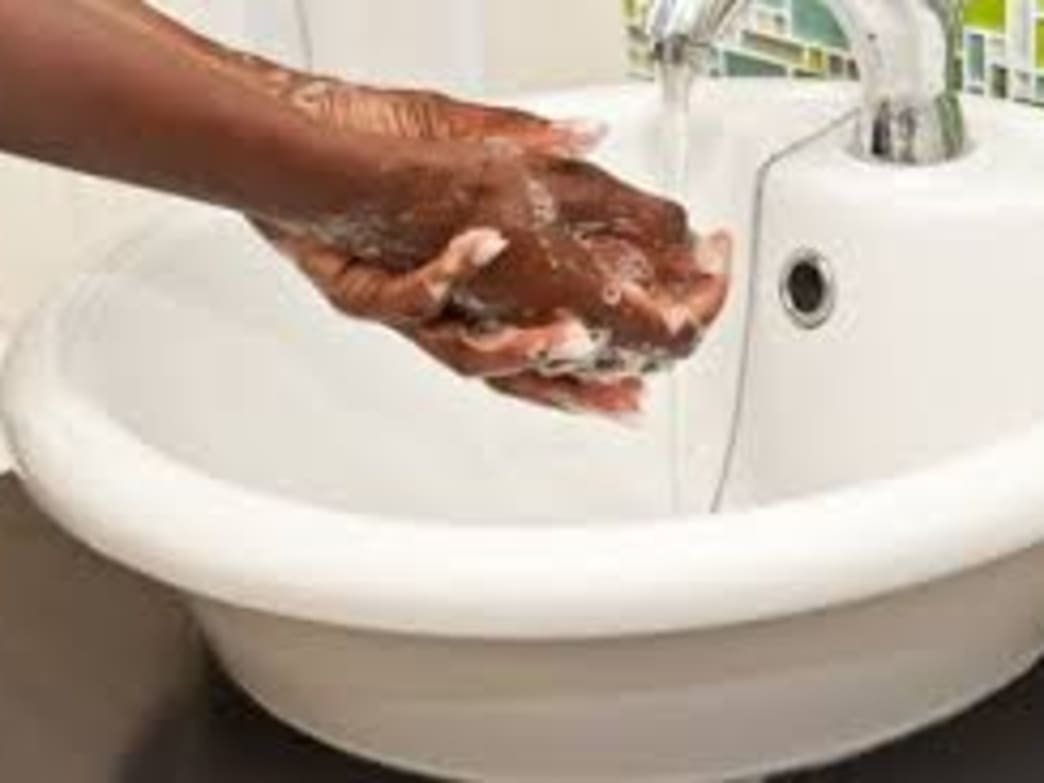Want to stay healthy? Learn to wash your hands the right way.

Whether you’re anxious about the outbreak of the novel coronavirus COVID-19 or simply fretting over the usual spread of seasonal influenza, there is a simple and easy way to reduce your risk of catching communicable diseases: washing your hands. The Centers for Disease Control and Prevention calls hand washing “one of the most important steps we can take to avoid getting sick and spreading germs,” and notes that basic hygiene can cut down on both the transmission of both upper respiratory infections like a cold or the flu and of diarrheal diseases like norovirus.
Just how effective is washing your hands in preventing illness?
There’s a reason the World Health Organization holds hand washing in high esteem: It works. While many people have been buying and hoarding face masks to protect themselves from COVID-19, the WHO and other health organizations actually advise against their use by healthy individuals. If you’re already sick, a mask might keep you from sneezing into the open air, thus protecting those around you from the aerosolized droplets full of virus you’d otherwise be spewing. But healthy individuals are unlikely to get sick because they receive a direct hit of airborne mucus to their open mouths. You’re much more likely to get infected by touching a surface with infectious agents on it and then touching your face, which you do roughly 52 times a day.
The best line of defense, then, is to frequently wash your hands of any pathogenic stowaways. According to the CDC, spreading awareness of proper hand-washing practices can lower a community’s rate of respiratory illnesses by 16 to 21 percent, and reduce the number of people who get sick with diarrhea by up to 40 percent.
When and how often should you wash your hands?
You should wash your hands before and after preparing food, before eating, before and after you care for a sick person or touch a wound, after using the bathroom or changing a diaper, after touching an animal, animal feed, or animal waste, after blowing your nose, coughing, or sneezing, after handling garbage, and before inserting or removing contact lenses.
What is the right way to wash your hands?
There have been a few studies in recent years suggesting that most people wash their hands too briefly to actually kill germs. So, if you want to avoid getting sick and spreading illness, it’s time to sit back, swallow your pride, forget everything you thought you knew, and follow these instructions for proper hygiene:
- Wet your hands with water at a comfortable temperature. You can’t actually get the water hot enough to kill microbes without burning your skin, so just do what feels nice. The CDC actually recommends shutting the tap off while you lather your soap to conserve water.
- Lather your hands with soap. Don’t worry about buying something with anti-microbial ingredients; research shows that outside of a hospital setting, these additives don’t provide a significant benefit, and their use contributes to the rise of antibiotic resistance.
- Make sure you lather the backs of your hands, between your fingers, and under your nails, as dangerous microbes can lurk on any part of your skin.
- Continue scrubbing for 20-30 seconds before you start rinsing. It’s longer than you think. One study showed that most adults lather for just six seconds. Try singing “Happy Birthday” twice in your head (or out loud, if you’re feeling jaunty) to help keep time.
- Turn the tap back on and rinse. The CDC notes there’s little evidence that using a paper towel to turn the tap on and off after washing will improve your health.
- Dry your hands with a clean towel if possible, or with an air dryer. The CDC says that wet hands more easily transfer microbes, so you don’t want to walk around with clammy hands all day.
Does hand sanitizer work as well as washing your hands?
Washing hands with soap is the most effective way to kill germs, but using a hand sanitizer that’s at least 60 percent alcohol is a good substitute in a pinch. Check the label of the product you’re using to see how much you should dispense, then squirt that amount onto the palm of one hand and rub your hands together. It’s important to rub the sanitizer all over your hands and fingers, and to continue doing so until your hands are dry—don’t just wipe the sanitizer off on a towel or your clothes.
Written by Rachel Feltman for Popular Science and legally licensed through the Matcha publisher network. Please direct all licensing questions to legal@getmatcha.com.




Leave a comment